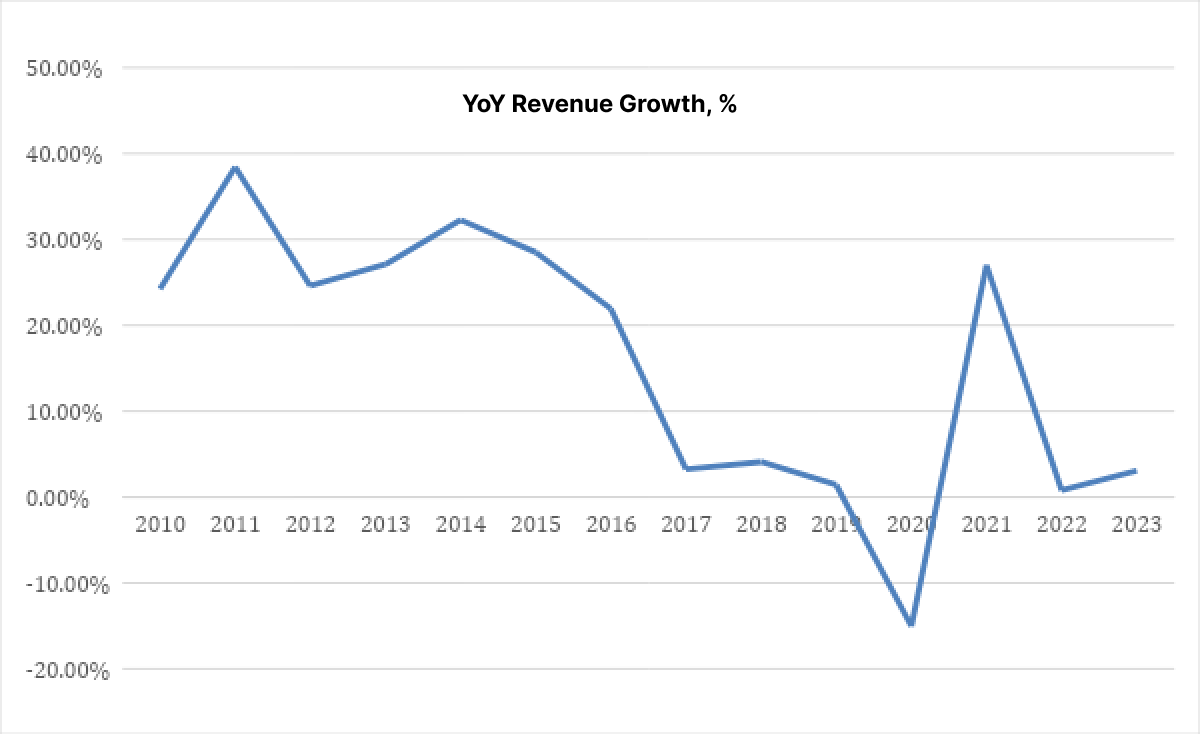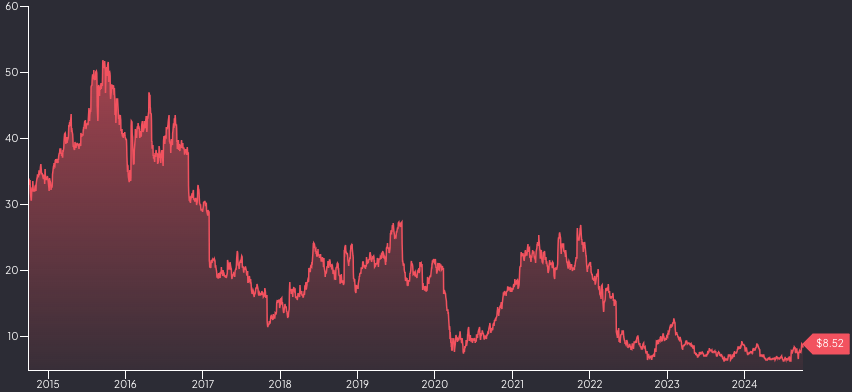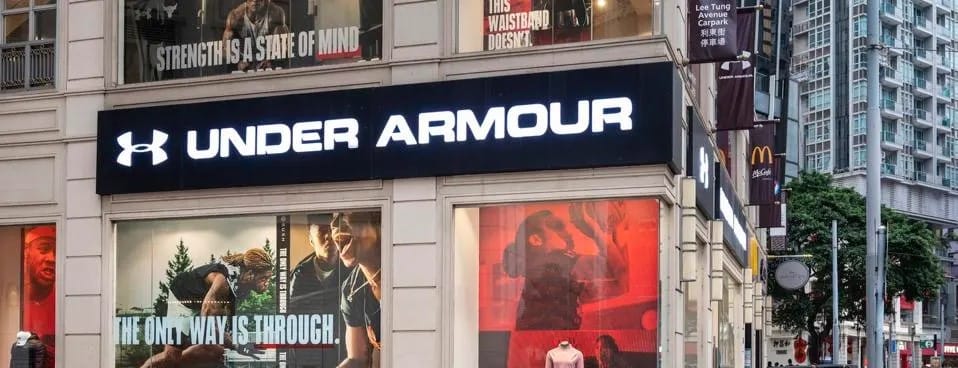- Under Armour, a Maryland-based sports apparel company, was experiencing rapid growth at the turn of the last decade.
- In April 2016, Under Armour reported first-quarter earnings, marking its 24th consecutive quarter of over 20% revenue growth.
- The company also predicted strong sales growth in the upcoming quarters.
- However, in January 2017, Under Armour announced disappointing quarterly earnings and the unexpected resignation of its CFO, causing the stock to drop by more than 25% in just one day.
- Shortly after, shareholders filed a lawsuit, claiming the company misled them about its financial health and revenue growth.
- Under Armour recently agreed to pay a massive $434 million settlement to investors to resolve the lawsuit. Affected investors can now file a claim to receive the payout.
Overview
During Under Armour's expansion phase, the company claimed it could sustain a 20% revenue growth for a long time. However, it later emerged that management hid issues with meeting these expectations due to declining demand and used questionable accounting practices to cover up the company’s struggles. These claims were also backed by a separate investigation from the Securities and Exchange Commission. After years of legal disputes, the company has agreed to pay $434 million to affected shareholders over this situation.
Background
“Our first quarter revenues grew 30%, with the growth coming from every facet of our business. And to be clear, that 30% number was no accident. When Stephen Curry decided to average 30 points this season to take the scoring title while wearing the number 30, we thought that putting up 30% growth on our end was the best way for us to demonstrate our pride and support of Stephen and the Warriors.” – Kevin Plank (Q1 2016 earnings call)
Kevin Plank, the company’s founder, served as the CEO during this growth phase of the company. The growth of the company was fueled by sportswear, which has been one of the company’s principal products since its establishment in 1996. By 2014, the company reached a peak as it became the second-largest sportswear company in the United States by revenue. Committed to being positioned in the market at the high end and leveraging its cutting-edge technology on fabrics, Under Armour achieved 26 consecutive quarters of 20%+ YoY revenue growth from Q2 2010 to Q3 2016. The company’s management promised a 20% growth in the upcoming quarters as well. However, Under Armour fell short of these expectations and, compounding the issue, the company's CFO also left. These events shook investor confidence, causing the stock price to drop over 25% in a single day in January 2017.
Under Armour’s Rosy Promises Met With Reality
After the third quarter of 2016, Under Armour began to see a significant decline in demand, particularly in its most profitable segment at the time: apparel. The company struggled to keep up with the rising "athleisure" trend, leading consumers to seek alternatives from its competitors.
In January 2017, when Under Armour announced its Q4 2016 earnings, investors were disappointed by weaker-than-expected sales growth. To make matters worse, CFO Lawrence Molloy also left the company, leading to a 26% drop in stock price on January 31, 2017. As shown below, Under Armour's revenue growth never fully recovered to the levels seen between 2010 and 2016, highlighting that the company’s business was already weakening in 2016, despite its continued promises of growth.

Under Armour's financial troubles, despite management's promises, led to a shareholder lawsuit in 2017. While Under Armour asserted strong demand for its products, signs of trouble were apparent, such as the bankruptcy of The Sports Authority. The lawsuit highlighted the company's inaccurate claims of achieving 20% YoY revenue growth amid rising inventory levels. This situation forced Under Armour to lower its prices significantly, damaging its reputation as a premium sports apparel brand while competitors like Nike maintained higher prices.
The suit also raised concerns about Under Armour's accounting practices, with accusations that the company inflated its financial performance by pulling revenue from future quarters. This led to the SEC investigation, which discovered that Under Armour had not disclosed its strategy of accelerating $408 million in orders for the second half of 2015, further casting doubt on its financial reporting.
The company’s former executives later revealed that Under Armour frequently pressured retailers to take products early and shifted goods meant for factory stores to off-price chains to boost end-of-quarter sales. These tactics, along with other questionable practices, helped the company maintain its sales growth streak.
After the investigation, Under Armour was charged with securities fraud for withholding key information in its SEC filings. In 2021, to settle the case with the SEC, Under Armour agreed to a payment of $9 million.
These financial missteps have had a lasting impact. After reaching a high of over $50 in 2015 amid strong growth and rosy promises, once a high-flying stock, UAA is currently trading at around $8.50. Under Armour stock has lost more than 74% of its market value in the last 10 years.

Under Armour continues to face financial challenges, reporting a 3% YoY decline in revenue for the most recent financial year. Its operating income has fallen from $408.5 million in 2015 to just $221.5 million in the past year, highlighting difficulties in staying profitable amid increasing competition.
Despite these issues, Under Armour's directors and management have consistently denied any violations of securities laws, asserting that their actions were normal and lawful. They claim that no material misrepresentations or omissions were made in their filings. Mehri Shadman, the company's chief legal officer and corporate secretary, further clarified the management's position:
“We firmly believe that our sales practices, accounting practices, and disclosures were appropriate, and deny any wrongdoing in this case.”
In a positive turn for shareholders facing significant losses, Under Armour reached a settlement in June 2024, agreeing to pay $434 million to affected investors. If you invested in Under Armour between 2015 and 2019, you can claim part of this settlement to recover some of your losses.
%%type:order-card,id:1265%%









